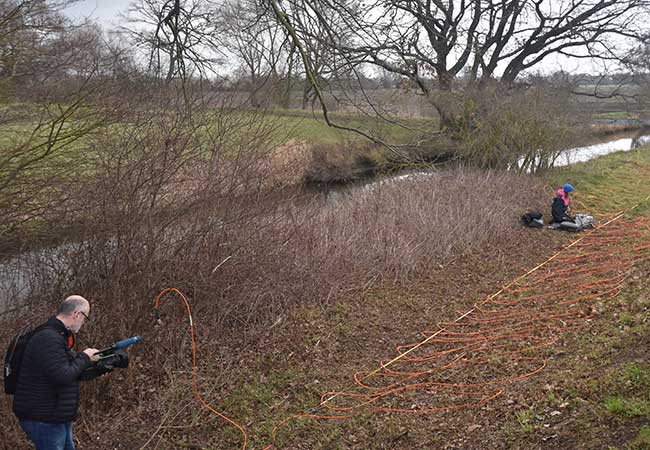The Landgraben, the body of water between the German cities of Groß-Gerau and Trebur, flows into the Rhine northwest of Astheim. Its name goes back to Count Georg I (1547-1596) of Hesse-Darmstadt, to whom the origin of this artificial watercourse has been attributed until now. Archaeologists, however, suspect the waterway had a different genesis. A team from the State Service for Heritage Protection and Management Hesse and the universities of Frankfurt, Mainz and Kiel can now use the DFG’s funding to research the Roman past.

Following archaeological investigations in the Hessian Ried, initial indications show the canal may have been dug much earlier than previously estimated: It is thought the Roman military created the artificial body of water during the conquest and development of the Ried, located on the right bank of the Rhine, in the 1st century AD. The land ditch, which merged into today’s Schwarzbach stream near Trebur, probably served to supply materials and goods to the Roman fort and its nearby civilian settlement in Groß-Gerau. With the new funds in hand, further research is now getting underway.
The German Research Foundation has made 370,000 euros available to continue the explorations. The money will go towards geophysical investigations, drillings and smaller archaeological excavations aimed at finding the canal’s original course and taking a closer look at the Roman settlement sites in Berkach, Groß-Gerau, Wallerstädten, Trebur and Astheim, located along its course, as well as their relationship to the body of water. The resulting findings will form the basis for two dissertations in the subjects of archaeology and geography at the universities of Frankfurt and Mainz.
The search for the course of the Roman land ditch currently is being conducted in the area of Groß-Gerau – Wallerstädten. As part of the practical field course at the University of Mainz, a group of students is surveying the area, taking measurements of the electrical resistance in the subsoil and drilling at selected points to clarify the soil structure and obtain dating evidence for the site’s original appearance. At the same time, Kiel University is carrying out large-scale geophysical measurements to clarify the relationship between the Roman settlement site and the artificial watercourse in this area.
Both written records and corresponding findings such as the so-called canal of Corbulo in the Netherlands constitute proof of the fact that the Romans already had the technical skills to steer and manipulate water bodies or even to create artificial canals. If the upcoming investigations confirm the hypothesis of the Landgraben’s Roman origins, this would be the first evidence of such a structure from the Roman period in Germany. The fact that the artificial watercourse exists as a body of water to this day would illustrate just how massive and lasting an impact the Romans’ intervention in the landscape has had.
The Roman fort „Biebelslache“, near Wallerstädten, was of decisive importance for the initial dating of the Landgraben, explains Prof. Markus Scholz, archaeologist at Goethe University. The fort bordered directly on the canal or – this is something the current research has set out to verify – was actually intersected by it. In the first case, Scholz says, the canal would be at least as old as the camp. In the second case, the camp, which existed from about 40 to 70 AD, would likely have served as a terminus post quem for the canal’s construction. „Our Institute held several teaching excavations at fort ‚Biebelslache‘ between 2008 and 2012,“ Scholz explains, adding that there now is a new opportunity to evaluate the excavations with the latest hypothesis in mind. As such, doctoral student Henrik Leif Schäfer will date and analyze other Roman sites along the trench in his dissertation. At the same time, doctoral student Elena Appel will study the geo-archaeological aspects of the project, which also gives students the opportunity to conduct fieldwork.










